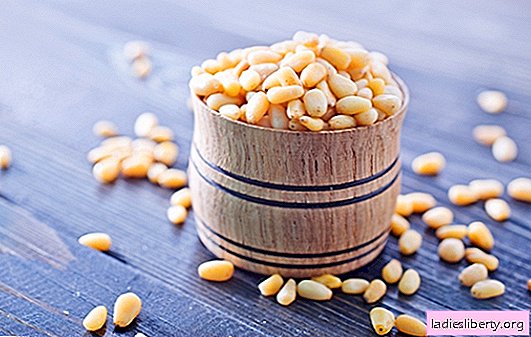
Rod Gerbera (Gerbera) from the Compositae family is represented by approximately 70 species of herbaceous large-flowering plants. Gerberas are perennial plants with basal leaves and flowers that resemble a large-colored chamomile. Under natural conditions, they grow in Africa and Asia, in our conditions in the culture is distributed Gerbera Jameson (Gerbera Jamesonii) with its many varieties and garden forms.
In the garden, gerbera blooms from early spring to late autumn. The height of some varieties of this plant reaches 60 cm, but in the conditions of home and garden cultivation more compact forms, not exceeding 25-30 cm in height, are more common. Depending on the species, gerberas can be simple, semi-double and double flowers, reaching a diameter of 12 to 16 cm. They can have the most diverse colors: white, yellow, cream, orange, pink, red, etc.
In addition to beauty, gerberas also have a number of advantages: simple culture care, fast growth and development, a long flowering period, and persistence in the cut form.
Gerbera - growing and care
Gerbera is suitable for growing in a garden only in areas with a mild, warm climate and quite hot in summer. In this case, for the winter it should be covered with a large layer of dry leaves, spruce branches or straw. Our winter temperature is too low for this plant, so the gerbera is grown either as an annual plant, or is dug out in the fall with a clod of earth and is kept until spring in a large pot for indoor plants in a lighted, cool and well-ventilated room. During home wintering can not keep the flower in too warm conditions, the best option would be the temperature of 7-8 ° C.
When grown in a garden, gerbera feels best in warm soil, flavored with inorganic fertilizers. Choosing a place for landing, you need to count so that at least half of the day it is illuminated by sunlight. Thus, it is possible to prevent excessive stretching of peduncles and to provide such a color and size of flowers, which is provided for this variety.
Watering the gerbera during active growth should be abundant, while resting - more carefully, however, it is equally harmful to allow both drying of the roots and waterlogging of the soil. Watering the plant, you need to make sure that the water does not fall on the leaf blade and does not flow into the rosette of leaves, causing rot. Water for irrigation should be soft, room temperature.
Also during active growth for gerbera it is necessary to ensure regular (once every two weeks) fertilizing with mineral fertilizer.
Gerbera - replanting and reproduction
In autumn, the gerbera is dug out and transplanted into a spacious pot with a diameter of at least 20 cm (the size of the pot is determined by the size of the plant). For transplantation, a soil mixture should be made from two 2 parts of peat and leafy ground and 1 part of sand. Care should be taken of good drainage (for this you can take expanded clay or broken clay shards). To avoid rot, during planting and transplanting the root neck of the plant must remain above the ground.
Gerber is propagated by dividing the bush and seeds. The first method is more common and simple. For this, in spring (April or May), two- or three-year-old bushes should be divided into 5-7 parts, each with two or three young leaves. If necessary, you can trim the roots to 10-15 cm. When planting, you need to ensure that the socket protrudes 1-1.5 cm above the soil surface, this is necessary for good growth and flowering of the plant.
Seeds should be sown from January to March in a light soil mixture, deepening by 2-3 mm. Contain them at a temperature not lower than 18 ° C. Approximately in 1-2 weeks shoots should appear, and after the formation of 4-5 leaves, seedlings should be planted in pots with a diameter of 8-10 cm. Gerberas bloom 10-11 months after sowing. Plants that are obtained from seeds do not bear maternal properties.
Gerbera - diseases and pests
Gerbera belongs to garden flowers, which are very sensitive to pests and various diseases, so planting in untreated soil can cause fungal diseases in its root system. One of the most common diseases of gerbera is root collar rot. It can occur due to fungi contained in contaminated soil, or due to stagnant water. The main measures for the prevention of this disease are compliance with irrigation regime and improvement of soil drainage,
Gerberas can also suffer from the appearance of gray rot, which is also caused by an excessive amount of moisture. Therefore, periodically it is necessary to process the flower with special preparations that destroy gray rot. However, it is impossible to prevent them from falling on a flower, so that ugly spots appear on it.
During the summer heat, powdery mildew may appear on the gerbera due to increased temperature. You can get rid of it by applying the appropriate fungicides or sulfur-containing drugs.
The main pests of gerberas include aphids, thrips and spider mites, as a result of which the plant can turn yellow, fade and even die. To get rid of them, it is necessary to process the flower with special insecticidal preparations.
If the gerbera flowers are cut off and not broken out of the nest, the remaining piece of peduncle can rot and infect the whole plant with rot.
So, to grow a gerbera in our conditions is not very simple. But if you try a little, your garden will be decorated with beautiful exotic flowers that fill it with the brightest colors from early spring to autumn!











